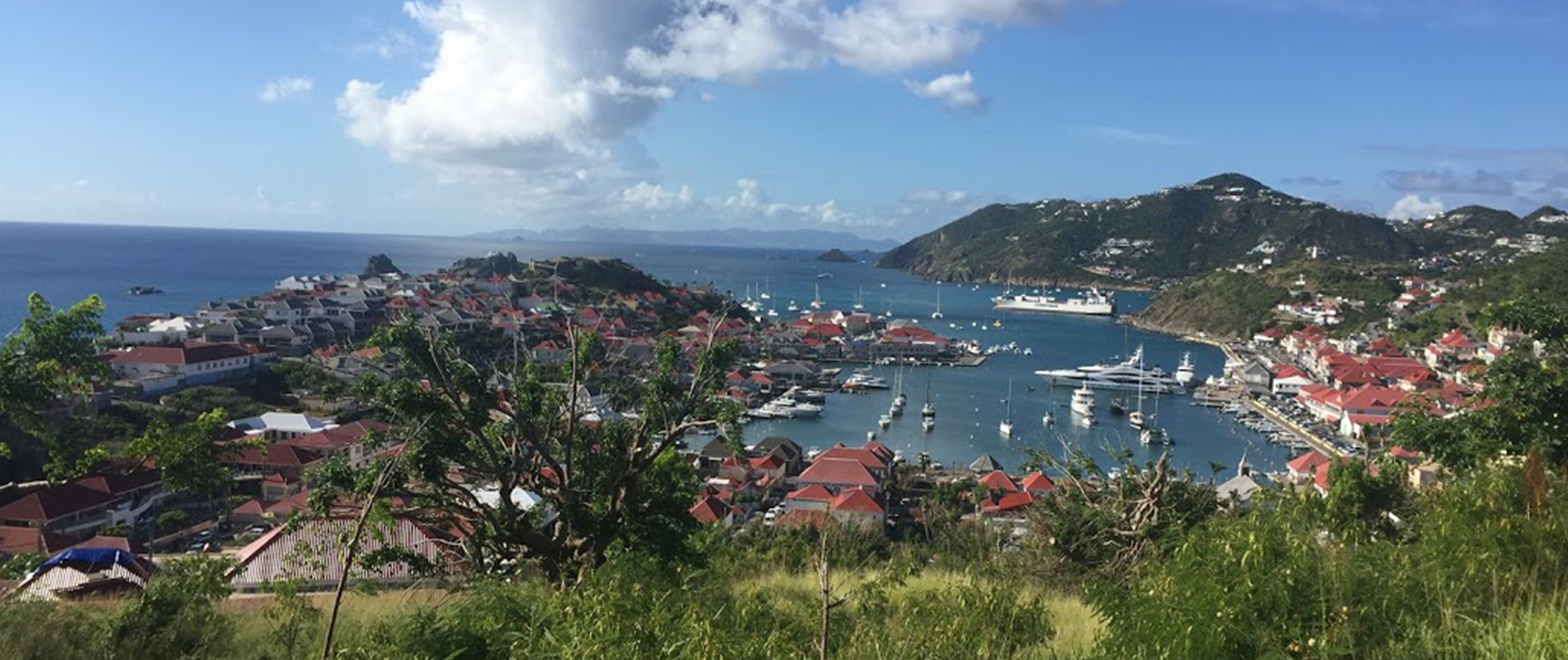Exquisite beaches, verdant hillsides, and the inviting streets of small-town Gustavia – you will find St. Barth today to be much the same as in years past, especially if you remember the tranquil romance of the island some 15 or 20 years ago.
After Hurricanes Irma and Maria struck the Caribbean in September, St. Barth and many of its neighboring islands were decimated by heavy winds and rain. Roofs were ripped from buildings, the roadways of Gustavia became waterways, and lush landscapes were almost completely stripped of greenery. But within days, the people were beginning to rebuild.
Where oceanfront villas and local businesses had been damaged, communities came together to repair them. Debris was cleared from roads and beloved beaches like Colombier, and within a matter of weeks, palm trees and native plants were rejuvenated across the island.
Tradewind Aviation’s David and Eric Zipkin were in the Caribbean the day after Hurricane Irma to coordinate relief flights filled with water, generators, and other much-needed resources and to evacuate those that needed to get off of St. Barth. And two weeks later, when Hurricane Maria made landfall in Puerto Rico, the focus shifted to bringing aid to San Juan.

Fly to St. Barth with Tradewind today, and your flight will operate out of San Juan as usual.
Despite the widespread devastation across the island – and extensive recovery efforts still underway – Puerto Rico’s airport reopened less than a week after the storm, and airlines were soon flying at full strength. The natural landscape has returned to normal, and many of the hotels, restaurants, and shops in the metropolitan area have resumed business too.
A flyover of St. Barth reveals an island restored. Miles of secluded beaches and the same glamorous exclusivity set the stage for a captivating getaway, albeit with the quieter ambiance that many longtime visitors yearn to experience again.
Although luxury hotels like Eden Rock, Le Guanahani, Cheval Blanc, Le Toiny, and Le Barthélemy will not reopen until summer, most of the island’s elegant villas are welcoming guests for winter. About 60 percent are open, from expansive oceanfront retreats to intimate escapes tucked among tropical gardens, and that number expected to rise to 80 percent by February and March.
Check into your private sanctuary, then travel to your favorite beach by boat. (Jicky Marine is open for rentals.) You will find Gouverneur, Saline, and St. Jean to be as beautiful as ever, and with fewer visitors on the island, you will likely have them much to yourself as you sunbathe, snorkel, and comb through diverse seashells left behind by the storm.
In Gustavia and beyond, more than 45 restaurants are open—from L’Isola, Bagatelle, 25 Quarter, and La Guérite on the harbor to Shell Beach’s Shellona, the gardens of Tamarin, and Jean Claude Dufour’s L’Esprit.
Bakeries like La Petite Colombe and Boulangerie Choisy beckon with freshly baked pastries and confections to enjoy as you watch the yachts drop anchor. And with many high-profile visitors and villa owners contributing to relief efforts, you may even catch a performance from the likes of Jimmy Buffet in the harbor. (He performed a free concert on December 27.)
Among the boutiques that are open for winter, you can shop at your leisure for luxury clothing at Hermes, natural bath and beauty products at Ligne St. Barth, and premier wines at Le Cellier du Gouverneur. Like the beaches, Gustavia has much to offer in terms of seclusion with fewer crowds this winter.
When planning your visit, keep in mind that some of the Caribbean’s most sought-after annual events will go on as planned in 2018, including St. Barts Music Festival in January, St. Barths Bucket Regatta in March, and Les Voiles de Saint-Barth in April. And no matter when you choose to spend time on the island, remember that the best thing that you can do to help the Caribbean is to visit. Tourism is essential to recovery, and Tradewind can get you there with regularly scheduled shuttle flights and private charters to St. Barth and beyond.


